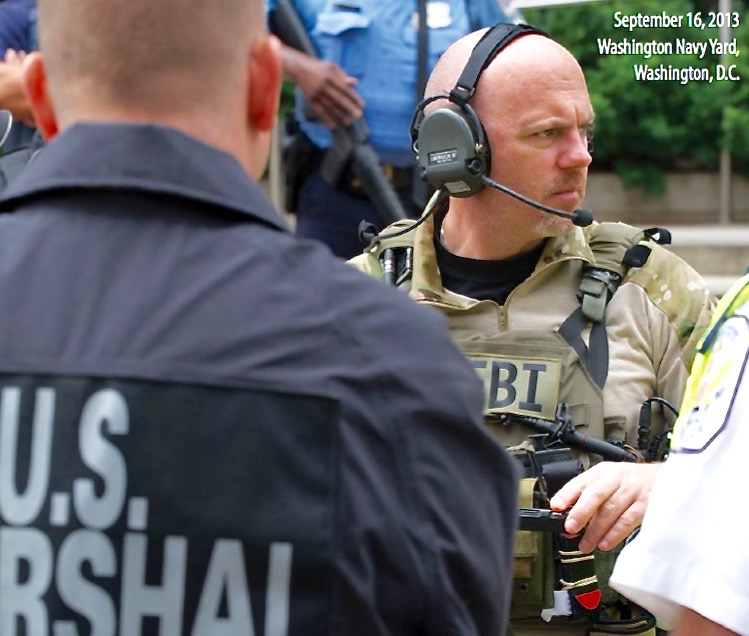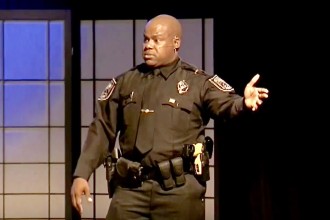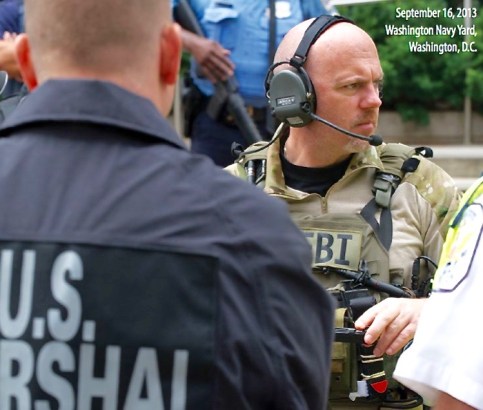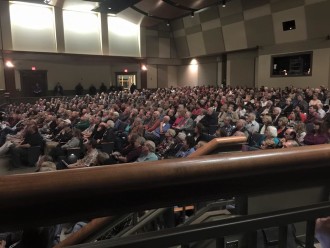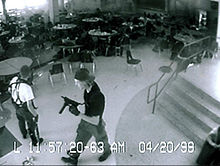Detective J. K. Walker is in high demand these days. One of his assignments is teaching DeKalb County citizens about “active shooter safety.”
Doing something is better than doing nothing,” said Walker, a member of the DeKalb Police Department’s Homeland Security Division, as he spoke to county religious leaders about the June massacre at the Emanuel AME Church in Charleston, S.C.
An “active shooter’” is the term used by law enforcement to describe a situation in which a shooting is in progress, and defines the protocols used in responding to and reacting at the scene.
Walker’s been busy for months, but December brought a schedule that was hard to keep up with.
Recent attacks have raised awareness of mass shootings.
Nine worshippers were gunned down at the historic Charleston church late last spring, and a South Carolina man was arrested the next day. In October, a man killed nine people at an Oregon college before killing himself. In November, a coordinated terrorist attack killed 130 people in Paris. And in December in San Bernardino, Calif., more than a dozen people were slain by a couple who later died in a confrontation with police.
People around the country have become increasingly concerned about this type of violence. As a result, active-shooter safety classes recently have been held or scheduled in metro Atlanta.
Killings are alike, but different
The motives of mass killers vary. Some, particularly in recent incidents, have been directed or encouraged by terrorist groups abroad. Some killers don’t belong to any apparent movement but have histories of extremism, bigotry and antisocial behavior. Some kill for reasons that appear personal and may never be understood.
The U.S. Department of Homeland Security says there is often no pattern or method to the selection of victims by an active shooter. Though the event may be planned, the victims are often killed at random.
Some shootings come without warning and are executed rapidly. In other cases, an earlier workplace altercation or neighborhood dispute, which may seem trivial, can trigger an act of stunning violence.
Since the 1999 massacre by two students at Columbine High School in Colorado, law enforcement has changed its approach to keeping the public safe. At that time, police waited for SWAT teams to arrive on the scene, because SWAT personnel were considered better equipped and trained to handle a shooting situation.
Columbine’s death toll — 13, not including the two attackers, plus 21 wounded — resulted in new approaches. Patrol officers are now trained to respond aggressively to active shooters as quickly as possible. Columbine proved that waiting can cost lives, and that keeping killers from getting to more potential victims is a priority.
Today, people in Georgia and around the nation are being encouraged to take active-shooter training by contacting their local law enforcement agencies. Online courses are also available.
Simple steps for a desperate situation
If you’re unarmed and a killer is on the rampage, the FBI training emphasizes “run, hide, or fight,” in that order.
If you can get away — do so immediately! But running doesn’t work for everyone, as there are many people who are physically unable to move quickly.
If you can’t leave, “hide.” Broadly speaking, that means doing whatever you can to keep the killer from finding or noticing you. It may include barricading yourself in a room and blocking the door with a wedged chair or other object. That’s better than hiding under a desk or table, where your are more likely to be seen.
“Fight” is self-explanatory. Potential victims, unable to run or hide, should try to stop the shooter — attack the attacker.
In this last-ditch situation, you are fighting for your life. Throw a chair or other object. Grab a fire extinguisher and discharge it, and when it’s empty, use it as a weapon.
More than 60,000 law enforcement officers across the nation have been schooled in a three-word system called “avoid, deny, defend.” This trademarked phrase — similar in philosophy to “run, hide or fight” — is part of a curriculum developed by the Advanced Law Enforcement Rapid Response Training (ALERRT) Center at Texas State University.
Several Southern states have been among the first to use and adopt the ALERRT curriculum as their state standard in an active shooter response. Some cities are moving forward with ALERRT as their standard: Atlanta has joined New York City, Miami, Houston, Dallas, and others in the change.
Listening to law enforcement
In Marietta, Lt. Brian Marshall, with the Marietta Police Department, has his hands full. “In the last four weeks, we’ve presented active shooter safety to over 2,000 people,” said Marshall. “The auditoriums have been packed.”
“We are trying to demonstrate to the people in our community that it’s better to execute a plan than to do nothing, or wait to see how things will play out,” said Marshall.
“The risk to the public is small and [a mass shooting is] highly unlikely to happen,” he said, “but we want people to prepare for possible events.”
Marshall suggested that the plans are reminiscent of the old “stop, drop, and roll” method taught to children in case their clothing caught on fire.
“We need to give people something to do that makes sense,” said Marshall.
In their training sessions, both Detective Walker and Lt. Marshall share scenarios of how to best protect yourself and co-workers in a shooting incident.
Like Marshall, Walker educates people on the best way to stay safe if confronted by an individual who has begun firing a weapon.
Violence can strike anywhere
It appears that the job of active shooter training won’t be going away any time soon, because the need for the training remains. Though most people will never face an active shooter situation, it’s a possibility for virtually everyone.
According to Gun Violence Archive, a nonprofit group, which attempts to keep up with shootings in the United States, 52,600 took place in 2015. The number of deaths climbed past 13,000 during that period.
Most of those were not active shooter incidents.
Unlike a defined crime, such as a murder or mass shooting, the term “active shooter” signifies a dangerous situation. The word “active” inherently implies that both law enforcement personnel and citizens have the potential to affect the outcome of the event based on their responses, according to the FBI.
In other words, the term “active shooter” means the violent incident is assumed to be ongoing. Authorities are trying to find and neutralize the perpetrator and to secure the area. In such a situation, members of the public should consider themselves at risk and act accordingly.
“Active shooter safety training for citizens is an important element in response and survivability during an active shooter incident,” says D. Scott Dutton, public affairs officer at the Georgia Bureau of Investigation.
It is important to know in advance what to do when you are confronted with a risky situation, said Dutton. “It can become difficult to figure it out when the crisis is in your face.”
Georgia, like the rest of the nation, has not been immune to attempted mass murders and terrorism.
Dutton mentioned two 2014 situations that brought national attention to the state. In one, an employee who left a note calling himself a “sociopath” wounded six people before committing suicide at a FedEx warehouse in Kennesaw. In the other, a man facing criminal charges in Forsyth County attempted to ram a vehicle into the county courthouse in Cumming, with the intent of setting off bombs and taking hostages. He was intercepted and killed in a gunbattle outside the building, and one officer was wounded.
According to GBI data, there were more than 18,000 incidents of guns being used illegally in Georgia in 2015, for assaults, homicides and robberies combined. Thankfully, none of these crimes rose to the level of a mass shooting or a massacre.
Training is critical, whether you’re in a school, a church, a hospital or are simply out shopping. Know what to do.
“Preparation through training is paramount,” Dutton said.
Judi Kanne, a registered nurse and freelance writer, combines her nursing and journalism backgrounds to write about public health. She lives in Atlanta.

